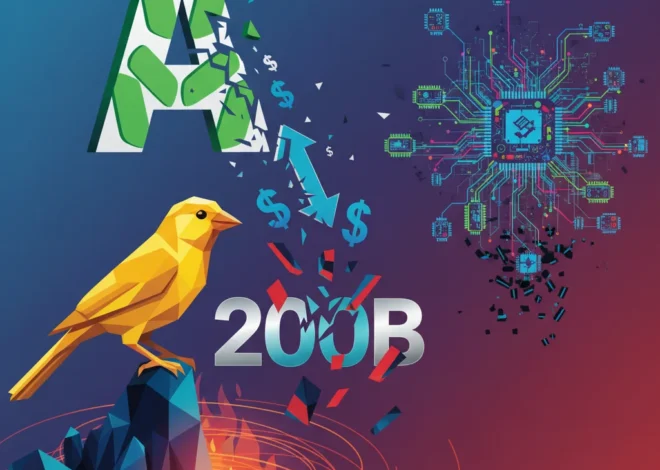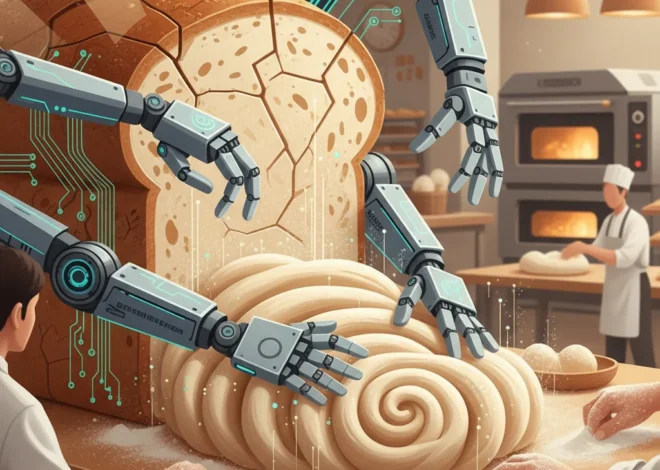
The AGI Tipping Point: Are We Already Living in the Age of Human-Level AI?
The AI World is Divided: Is Human-Level Intelligence a Present Reality or a Distant Dream?
Just a few years ago, the concept of Artificial General Intelligence (AGI)—AI with the capacity to understand or learn any intellectual task that a human being can—felt like a plot point from a sci-fi blockbuster. Today, that science fiction is colliding with reality, and it’s sparking one of the most intense debates in the history of technology. A growing chorus of artificial intelligence pioneers, including leaders at labs like Anthropic and Google DeepMind, are making a startling claim: in many key areas, AI has already arrived at the threshold of human-level intelligence.
This isn’t just academic chatter. This declaration is sending shockwaves through every industry, from software development and SaaS to finance and healthcare. For developers, entrepreneurs, and tech professionals, the implications are staggering. Are we on the verge of a superintelligence explosion that will redefine society, or are we being mesmerized by incredibly sophisticated, yet fundamentally limited, technology? Let’s dive into the heart of this debate, unpack the evidence, and explore what this means for the future of innovation and our world.
The “It’s Already Here” Camp: A New Dawn for Intelligence
The argument for the imminent arrival of human-level AI is built on jaw-dropping empirical evidence. Proponents point to the exponential growth in the capabilities of Large Language Models (LLMs) as proof that we are on the right track. Dario Amodei, the chief executive of Anthropic, suggested that we could see AI systems achieve human-level intelligence in a wide range of tasks within the next two to three years. Similarly, Demis Hassabis, co-founder of Google DeepMind, has predicted that AGI is potentially just “a few years, maybe within a decade” away.
Their confidence isn’t unfounded. These new models, powered by massive-scale machine learning algorithms running on vast cloud infrastructure, are shattering benchmarks that were once considered exclusively human domains. They can:
- Pass notoriously difficult professional exams in law, medicine, and business.
- Write complex and functional code in multiple programming languages.
- Generate creative prose, poetry, and scripts that are often indistinguishable from human work.
- Analyze medical scans and financial data with superhuman speed and accuracy.
This rapid progress has convinced many that the path to AGI is a matter of scaling—more data, more computing power, and more sophisticated algorithms. The core belief is that as these models grow, emergent properties like reasoning and understanding will naturally arise from the complexity. For startups and tech giants alike, this philosophy has justified pouring billions into building ever-larger models, creating a gold rush for AI dominance.
The Day the Cloud Stood Still: Lessons from the Microsoft Outage That Silenced the Internet
The Skeptics’ Counterpoint: The Grand Illusion of Intelligence
On the other side of this intellectual chasm are some of the industry’s most respected thinkers, who warn that we are mistaking mimicry for true intelligence. The most prominent voice in this camp is Yann LeCun, Meta’s chief AI scientist and a Turing Award winner often called one of the “godfathers of AI.”
LeCun argues that the current architecture of LLMs is a dead end on the road to AGI. He contends that these systems lack the fundamental components of human (or even animal) intelligence, such as reasoning, planning, and a persistent understanding of the physical world. In his view, they are “off-ramps” from the true path to AGI because they are trained solely on text and can only interpolate from the data they’ve seen. They can’t truly reason about novel problems they haven’t encountered in their training data (source).
Aidan Gomez, chief executive of the LLM company Cohere, echoes this sentiment, highlighting that today’s AI struggles with multi-step reasoning. Ask it to solve a complex, novel problem, and the illusion of understanding quickly shatters. The skeptics believe that true AGI will require a paradigm shift—a new architecture that can build a world model, understand cause and effect, and learn with the efficiency of a human child, not just by ingesting the entire internet.
Defining Intelligence: Are We Even Measuring the Right Thing?
Part of the conflict stems from a lack of consensus on what “human-level intelligence” truly means. Are we talking about the ability to perform a specific task (like passing the bar exam) or a more general, adaptable intelligence that can navigate the complexities of the real world?
Human intelligence is not a monolith. It’s a spectrum of capabilities. To bring clarity to this, let’s compare where today’s most advanced AI stands across different facets of intelligence.
Here is a simplified comparison of current AI capabilities against human benchmarks across different domains of intelligence:
| Type of Intelligence | Top-Tier AI Systems (e.g., GPT-4, Claude 3) | Average Human Adult |
|---|---|---|
| Logical-Mathematical Reasoning | High to Superhuman (in structured domains like math, coding, standardized tests) | Variable, often lower than top AI on pure calculation and data processing. |
| Linguistic Intelligence | Very High (can generate fluent, coherent, and stylistically diverse text) | High (but AI can process and synthesize vastly more information). |
| Spatial & Physical Reasoning | Very Low (lacks a true understanding of the physical world, space, and object permanence) | High (innate understanding of physics, navigation, and interaction). |
| Emotional & Interpersonal EQ | Low (can simulate empathy based on text patterns but lacks genuine consciousness or feeling) | High (possesses genuine emotions, empathy, and social awareness). |
| Creative Intelligence (Novelty) | Medium (excellent at remixing and synthesizing existing concepts, but struggles with true, out-of-the-box invention) | High (capable of true paradigm-shifting invention and creativity). |
As the table illustrates, AI excels in areas that rely on pattern recognition and data processing from vast datasets. However, it falters in areas that require embodied experience, common-sense reasoning, and a true understanding of the world. This discrepancy is at the core of the AGI debate. According to the Financial Times, this divide in capabilities is what fuels both the excitement and the skepticism surrounding current AI technology.
Beyond the 'Glasshole': Can AI Finally Make Smart Glasses a Reality We Trust?
The Real-World Impact: What This Means for You
Regardless of which side of the AGI debate you fall on, the practical capabilities of today’s AI are already a force of disruption and opportunity. The progress we’ve seen is transforming industries and creating new challenges. Here’s what it means for different professionals:
For Developers and Software Engineers
The rise of AI-powered coding assistants is fundamentally changing the nature of programming. These tools accelerate development, automate boilerplate code, and help debug complex problems. However, this also means the skills that are most valuable are shifting from pure coding to system design, architectural thinking, and the ability to effectively prompt and guide AI systems. Understanding the limitations of these models is now a critical skill to avoid introducing subtle but serious bugs into software.
For Entrepreneurs and Startups
This is a Cambrian explosion of opportunity. New SaaS businesses are being built to leverage AI for everything from marketing automation to drug discovery. The barrier to creating intelligent applications has never been lower. However, the challenge is to create a durable competitive advantage. Simply wrapping an API from a major AI lab is not a long-term strategy. True innovation will come from building unique datasets, creating novel workflows, or solving specific industry problems that large, general models can’t address out of the box.
For Cybersecurity Professionals
The AI revolution is a double-edged sword for cybersecurity. On one hand, AI and machine learning are powerful tools for detecting anomalies, predicting threats, and automating incident response. On the other hand, adversaries are using the same technology to create more sophisticated phishing attacks, generate polymorphic malware, and discover vulnerabilities at an unprecedented rate. The future of cybersecurity will be an arms race, with AI-driven defense mechanisms battling AI-driven attacks.
Digital Dominoes: How One Microsoft Outage Revealed the Internet's Fragile Foundation
Conclusion: Navigating the Dawn of a New Era
The debate over whether human-level AI is already here is more than an academic exercise. It shapes research priorities, guides investment decisions, and influences public policy. The “scaling-is-all-you-need” camp sees us on a direct and rapid trajectory to superintelligence, a moment that would be the most significant event in human history. The skeptics urge caution, arguing that we are captivated by a clever illusion and that true machine intelligence requires a deeper scientific breakthrough.
Ultimately, it may not matter whether we call today’s systems “truly intelligent” or not. Their capabilities are undeniably transformative. They are powerful tools that are amplifying human productivity, creativity, and discovery. The challenge ahead is not just to build more powerful AI, but to build it wisely, safely, and in a way that aligns with human values.
What do you think? Are we witnessing the birth of a new form of intelligence, or are we at the peak of a hype cycle built on sophisticated mimicry? The answer will define the next decade of technology and, quite possibly, the future of humanity itself.


